Published February 2021 | Updated March 2025
Wall-to-wall carpeting has come a long way since the 70s when inexpensive nylon shag or cut pile carpeting seemed the only option. Today, options for chic, durable, eco-friendly, playful or practical carpeting are abundant, thanks to enlightened design trends and emerging manufacturing technologies.
Flat weave carpets are no exception and have grown in popularity among designers and homeowners alike who are looking for classic weaves or statement-making foundations for homes, hotels, shops and more. We specialize in flat weave rugs and carpets here at Curran and sisalcarpet.com, so we know a thing or two about installing wall-to-wall carpeting. We know that installing a flat weave carpet takes added skill and attention to detail for the final product to perform to its potential.
If you have chosen to install a flat weave carpet in your space, you have come to the right place. Selecting the ideal flat weave carpet and having it installed properly is a big project and can feel overwhelming.
- Selecting the Carpet
- Lead Times & The Carpet Roll Delivery: Things to Consider
- A Basic Timeline
- Preparing for Installation
- All Materials Must Acclimate!
- The Art of Cutting Flat Weave Carpet
- Installation Videos
- Best Practices for Seams, Open Ends & Transitions
- Sticky Tips for Best Adhesion
- Post Installation Care
- Our Final Words
To assure that your project is a stunning success, we’ve shared some of our must-follow steps and guidelines so that your installation project goes as smoothly as possible.
** Please note: the installation steps and suggestions provided below are for guidance only. We highly recommend hiring a qualified, licensed and bonded carpet installer who has experience installing flat weave carpet. Your professional installer is responsible for following all guidelines and industry standards for preparation, using compatible and premium quality products, and utilizing suggested methods and techniques.

Selecting the Carpet
It takes time to find a carpet that is a perfect fit for your unique self-expression, your lifestyle and the needs of the space. So when considering which weave to have installed, take the following factors into account:
- The intended purpose of the space must be taken into consideration. Is your project a dining room, a bedroom, a hotel lobby or a boutique shop?
- A bedroom is perfect for a soft wool or wool blend weave.
- A busy hotel lobby or retail shop needs a highly durable, contract-grade, stain-resistant synthetic flat weave.
- A natural-look weave from our exclusive SynSisal® collection is ideal for commercial or hospitality spaces.

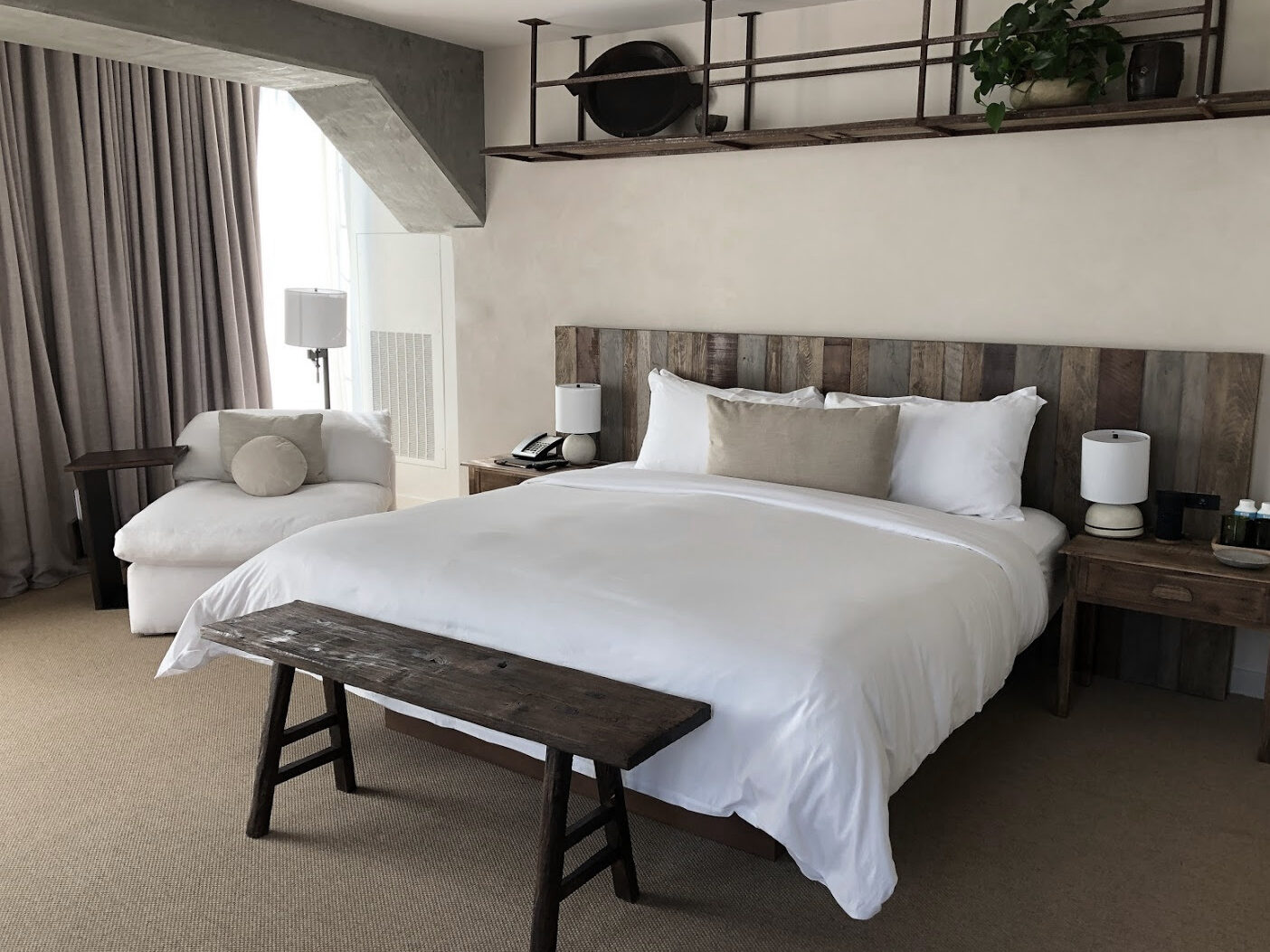

- What is your lifestyle? Are your hands full with children and pets? Select a weave that is durable, cleanable and soft underfoot.
- Color choice for the space. Color choice should be functional if you need to hide dirt in a busy space. Picking a creamy, light-colored carpet for an entryway or dining room is inviting maintenance challenges.
- Durability requirements. The fiber or material of a carpet has everything to do with the performance of the carpet and your enduring happiness with the carpet. A flat weave sisal carpet is natural and extremely durable, but can stain easily and is not soft. A synthetic polypropylene carpet resists stains and has more colorful options. Learn about the carpet’s fiber composition and how it will meet your specific needs before purchasing.
- The Ultimate Guide to Rug Fibers can help you!
- Understanding underlay. Does your project or the carpet itself require carpet padding or underlayment? Talk to your sales agent or installer for help with making the best choice.
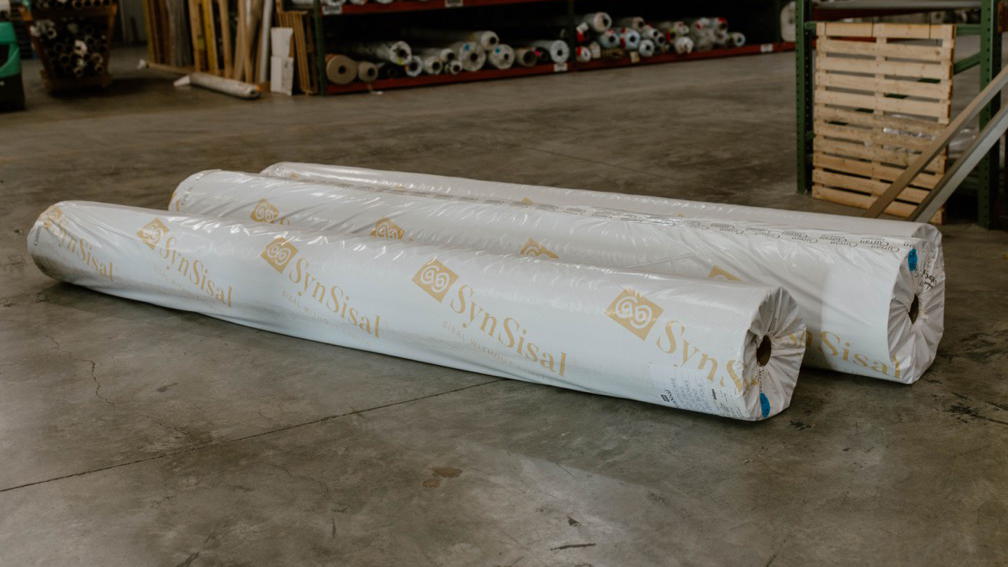
Lead Times & The Carpet Roll Delivery: Things to Consider
Having wall-to-wall carpet installed is a construction project that requires thoughtful planning. Once you have selected your weave, please be sure to consider and discuss logistics and delivery options with your sales agent.
- Plan for lead time and delivery timelines. Be sure you know the lead time for the carpet you picked. It could be days or weeks before it even ships. Once the carpet ships, it could be days or weeks before it arrives.
- Make a plan for the roll delivery. The average roll of carpet is between 12-13’ wide x 100’ long and weighs approximately 725 lbs. Overall, we encourage oversized roll shipments to be delivered to a commercial location (e.g. your installer’s warehouse) or delivered via Enhanced Delivery which includes a carry in service at an additional cost. If you need to estimate the weight of your roll, take the square yardage x 5 lbs, plus about 25 lbs for the core. The weight adds up quickly!
- Map out your space. Take into consideration any challenging corners, tight turns on stairways, the use of a freight elevator and the need for additional labor. Carpet rolls should not be bent, folded or forced in any way to make fit in an elevator or around a tight space as it could compromise the structural integrity of the weave and/ or the backing.
- Look for defects. Once the roll of carpet is inside, carefully remove the packaging, being careful not to use a sharp blade that could damage the product. Please ask your installer to inspect the carpet and confirm style and color. Check each length of carpet for damages or defects – claims of damage or defects must be made ahead of cutting or installing your carpet. When considering defects, remember that carpet is a textile, and variations in surface texture or yarn size are not defects but are inherent to the beauty of a flat weave carpet.
- Report defect to manufacturer. If you have a claim of damage or defect, you must report it to your sales agent immediately for the claim to be considered, before any installation begins. If quality remarks or product defects are not reported to Curran/ sisalcarpet.com, we can not be held responsible for any visible defects and costs after the carpet has been cut and/ or installed.
A Basic Timeline
From the beginning planning stages to the joyful moment when furniture is allowed back into the space, a wall-to-wall installation project could easily span many weeks to months. Here is a basic to-do list to help you map out a timeline:
Preparing for Installation
Installation is the most important stage of your project. A professional installation makes all the difference in the performance and life span of your carpet, and most importantly, the finished quality you see everyday. The time you spend now planning the installation will be rewarded with a successful installation.
Here are some steps you should take for best results:
- Prepare the space. Speak with your installer to determine what you need to move out of the space, what condition the space needs to be in (i.e. how clean), and the ideal temperature.
- Make a schedule. Plan for the fact that you will not be able to use this space for a few days prior to installation as well as post installation. After you have prepared the space for installation, the carpet and all other associated materials (subfloor, underlay, adhesive, etc.) will need at least 24-48 hours to acclimate to your space. Additionally, the carpet will need at least 24, if not 48, hours post-installation to cure and settle before you can return your personal items to the area.
- Contact the manufacturer. If you or your installer have particular questions ahead of starting a project, always reach out to the manufacturer before beginning your project. Unsightly mistakes during installation are often blamed on the material, when in fact a few pointers ahead of starting the project would have made all the difference.
- Order extra material. Please discuss overage with your installer. We generally recommend ordering about 10% extra flooring material to make sure you don’t come up short. Based on the layout or needs of your space, your installer may recommend more.
- Consult resources. If you are installing carpeting on stairs or a stair runner, there are a few additional considerations to take into account. Our Stair Runner resource page has suggestions and tips.
All Materials Must Acclimate!
Speak with your installer about how best to prepare the space and the product for installation. Acclimation of your material in an environment controlled room, at the average sitting temperature of the area, is key to successful handling and performance of the product both pre and post installation. This step can not be avoided, without repercussions.
Some things to consider:
- Temperature. The recommended temperature range is between 64-77°F and the area must be dry with low humidity. Keep the ambient temperature as consistent as possible within that range.
- Unroll the carpet. Let it loose-lay for 24 hours in the room. Allowing the carpet to relax into its intended shape will ease its compliance when installation begins.
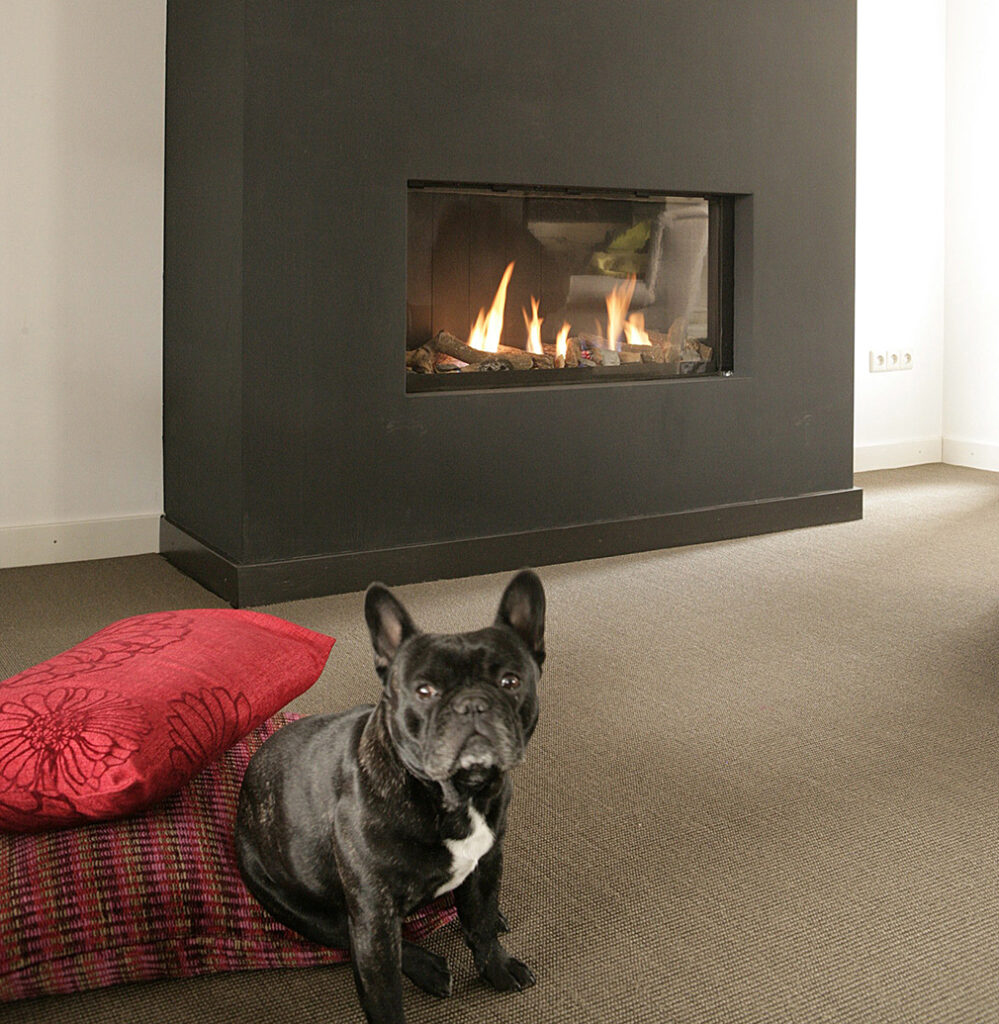
The Art of Cutting Flat Weave Carpet
Cutting flat weave carpet requires precision and planning. Poor cuts lead to unsightly seams, excessive fray behavior, tearing and wasted material.

Follow these steps so it doesn’t happen to you:
- Razor edge. Use sharp blades and change them frequently to achieve clean edges.
- No hooks. Do not use hook or curl blades as they cause unnecessary fraying.
- Cut carefully. Thoughtful consideration must be given to where the carpet will be cut. Cutting must be made exactly along the pile-warp surface yarn. Your installer should be knowledgeable in this regard. If there are questions in regards to the best place to cut flat weave carpeting, please contact the seller for advice ahead of installation. Better to be proactive and avoid costly mistakes.
Installation Videos
Our expert carpet installer walks you through all the details in our Flat Weave Carpet Installation video collection, an excellent resource. See how to cut and seal a seam and more. Find the videos here.
Best Practices for Seams, Open Ends & Transitions
Flat weave carpet is a textile with specific characteristics and even installations with a skilled, professional installer will reveal a visible seam line. Because of this, it is important to qualify the skill level of your professional installer for best finish results.
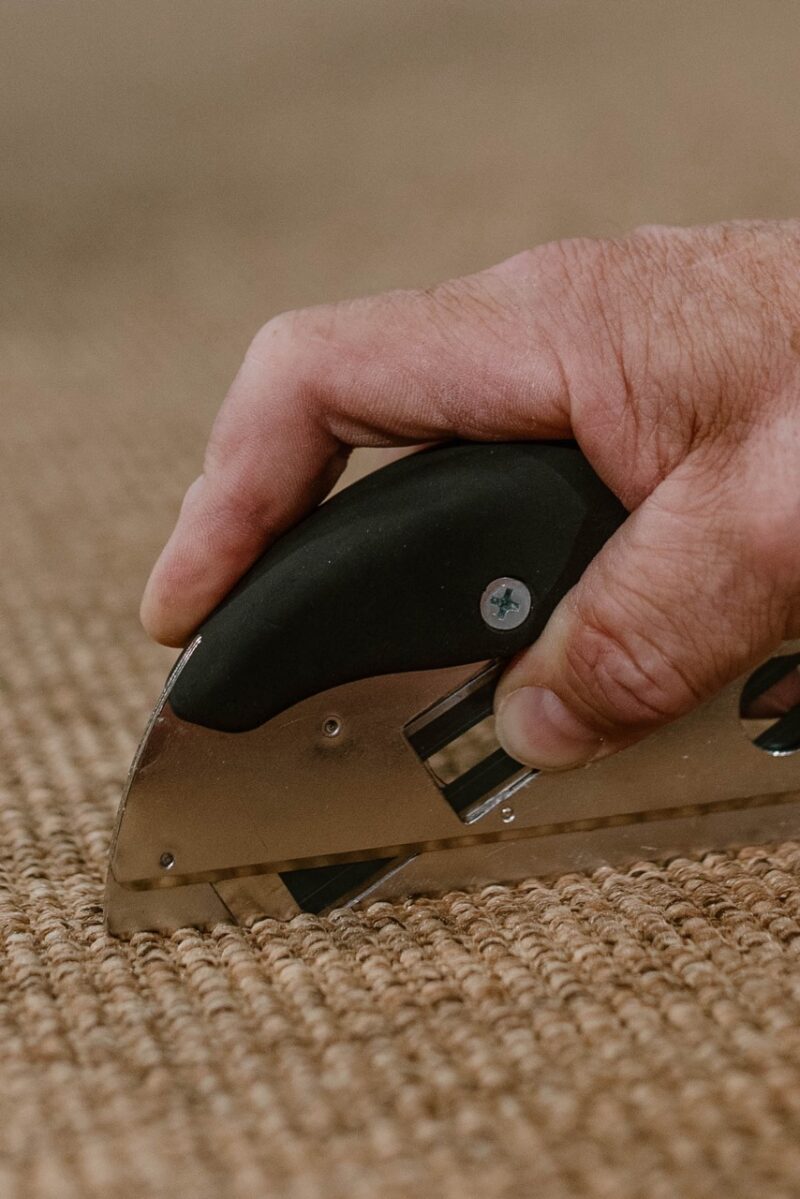
To ensure a good installation, please review the following points with your installer:
- Plan seams. If your installation requires the use of seams (where two edges of carpet are laid next to each other for a continuous look), work with your installer to decide the best places for the seams. It is important to plan out the location of seams prior to any cutting or installing of the carpet.
- Ideally, seams should be placed under furnishings and away from high traffic areas.
- Do you have windows or prominent light sources in the room? If so, be sure to lay the seams perpendicular to any light sources, otherwise the light becomes a spotlight on the seam.
- Have you determined the weave direction of the rug in the room? If your carpet has a pattern, plan the orientation of the material not just for aesthetics, but also for seam placement and ease of installation.




- Use a seam sealer. All cut edges in a flat weave carpet, regardless of the fiber, will “open” when cut. Because of this, the use of a high quality seam sealer specific to your carpet fiber is a must. It is critical that all cut edges, including seams, perimeters and openings, are sealed such that the thickness of the primary and secondary backing is covered without contaminating the face yarns. If this step is skipped, you are liable to have unsightly sprouting and blooming on the seam and other cut lines, causing a poor finish quality that is hard to correct later.
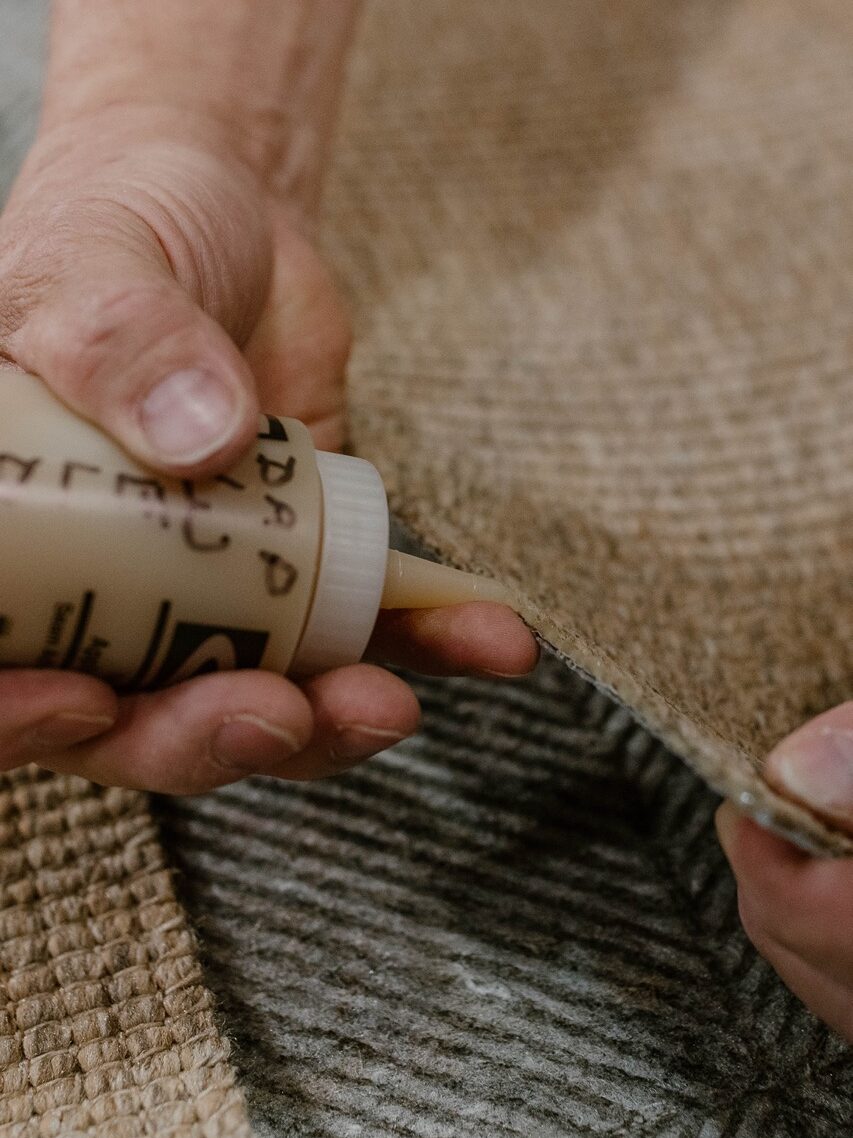
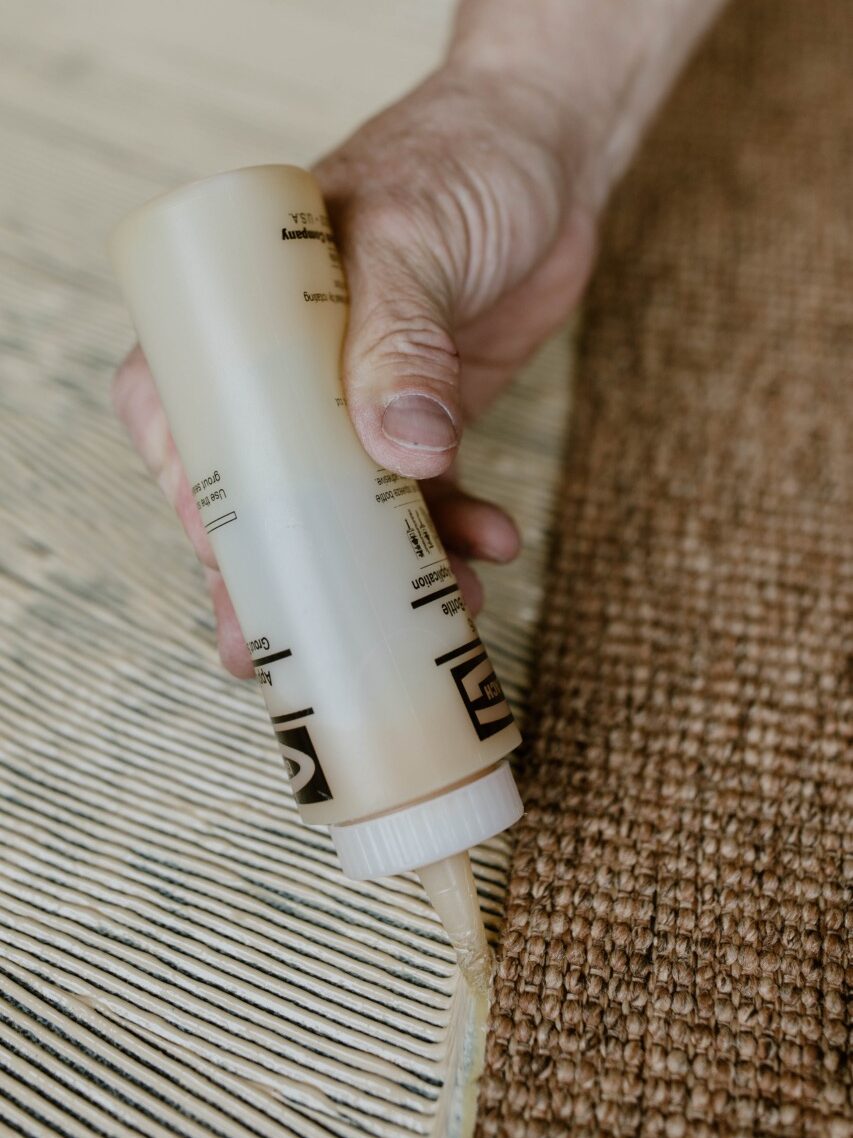

- Plan transitions. Transitions at doorways, in hallways and other areas need to be handled thoughtfully and with care.
- Where your carpet is cut to create seams is very important and should be planned out in advance and in consideration of the orientation of the carpet in the room. Side seams (seam cuts made in parallel with the sides of the roll) are always recommended over header seams (cuts made in parallel to the top or bottom of the roll).
- Transition strips or other transition options that bridge and protect the transition areas should be considered to reduce the possibility of fraying.
- Trim base. Around the perimeter of the room, you will be most pleased with your installation if the base trim is installed (or re-installed if it was removed prior to installation) over the top of the carpeting, post installation. This ensures a clean and beautiful finish. If this is not an option, please be adamant that all open cuts are sealed with seam sealer.
- Material transitions. If you are planning to inset the carpeting into a hard surface like hardwood, ceramic, stone or other hard surface flooring, some additional considerations should be taken. Flat weave carpeting will hold up best over time with the use of a lipped transition, such as a Schlueter strip or other transition, to protect the open ends of the flat weave. If the cut and sealed ends are left exposed, over time you may experience edge ravel, tuft loss or fraying.


Sticky Tips for Best Adhesion
As a best practice, we recommend the use of only high solid, premium adhesives. For a recommended formula based on best finish results, please refer to the installation guidelines for that product. Be aware of the dry times or cure rate for the adhesive and factor that into your project timeline.
- Clean your floors. For a successful installation, the adhesive needs to stick to your floor and the material. Dirt, dust and/ or moisture will lead to an installation failure. Your subfloor or substrate must be clean and tested for moisture emissions before installation.


- Trowel size. Please see usage instructions on your adhesive product for recommended trowel size, spread rate and curing time for best outcome.
- Tack time. Observing the “tack time” as recommended by the adhesive manufacturer is critical for installation success. Glue should be allowed to set-up and have a stringy or tacky quality before adhering the carpet to the substrate. Flat weave carpet should never be laid in wet adhesive; doing so could lead to shrinkage and/ or other adverse reactions.
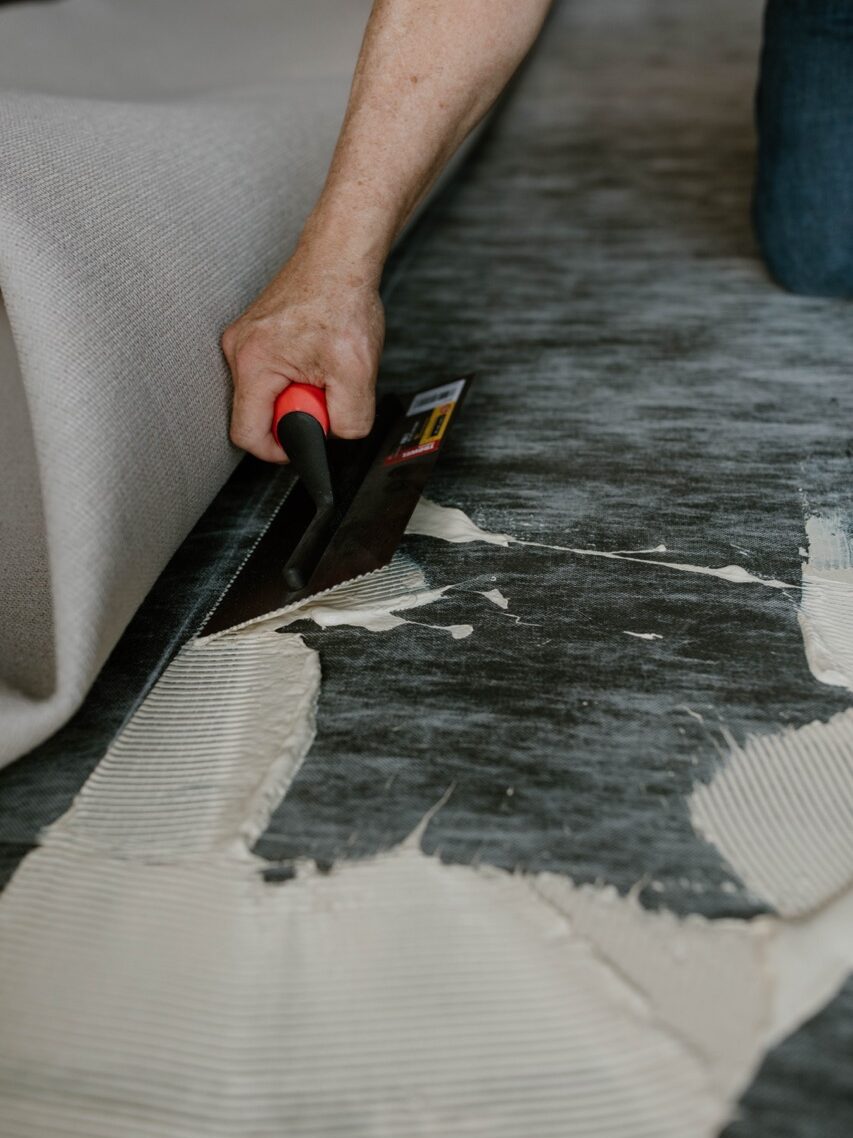


- Adhesive and backing. It is important to emphasize that the chosen adhesive be compliant with the backing of your carpet. There must be a 100% transfer of adhesive to the backing of the carpet.
- Waiting period. Although you are anxious to put your room back together and enjoy your new flooring, it is often required that you wait 24-48 hours for adhesive to fully set or cure before moving furniture back onto the surface.
Post Installation Care
The final step in carpet installation is as important as the first. Here are our tips:
- Follow a timeline. As noted previously, factor into your timeline the curing or drying time for the adhesive. Newly installed carpeting should not be walked on or have furniture placed on it for a minimum of 24-48 hours to allow the adhesives to cure properly.
- Let the carpet breathe. Do not cover any portion of the carpet with plastic or other material that would limit breathability. If the carpet can not breath, moisture can become trapped, leading to issues with the adhesive not curing, shrinkage and/ or installation failure.
- Clear the room. Make sure the area has been cleared of all debris and tools.
- Return furniture. When it is safe to bring your furniture back into the room, use a furniture sled or a rolling dolley. Dragging heavy objects or sharp edges can cause permanent damage by tearing or friction burns.
- Climate control. For the next 30 days, restrict carpet exposure to water for cleaning and maintain a comfortable room temperature. The temperature should not drop below 50°F.

Our Final Words
Flooring choice can have an instant, transformative impact on the look and feel of a space. Selecting the right carpet and having it installed correctly are crucial not only to the longevity and durability of the carpet, but your lasting happiness and delight with your choice.
So, a word to the wise: hire a qualified installer who is licensed and bonded and has worked with flat weave carpet. A professional, qualified installer is worth the extra money. If you try to cut costs on the installation, you may end up with a botched installation. Over the years, we have seen our fair share of installation failures and often, the installer points their finger at the carpet as the culprit. But a poor install job does not equal defective carpet. Taking extra time at the beginning of your project to think about your design, vet a qualified flat weave carpet installer, work out all the logistics and plan for patience will translate into years of enjoyment.
We hope that this blog post and all the supporting information will give you and your installer the tools to succeed. If you still have questions, please do not hesitate to contact our team of design specialists for help at any stage of your project (preferably at the beginning!).

Christy is the Flooring Content Specialist at Curran and sisalcarpet.com. She writes about flooring products with a focus on design and sustainability. For 5 years, her blog posts, technical guides, and product descriptions have led customers along the path from purchasing to maintaining their flooring investments. Her favorite natural flooring? A sisal rug, of course.












7 comments
Thank you for the information on flat weave carpet installation. I really want new carpeting for my house.
Hello I have at last had sisal installed in my hall and lounge..love it, but the installer has a line showing in the middle of the lounge,with a gap and the edges do not meet the wall, great for vacuming!! Ive called the manager to check it out. I presumed they would finish the edges with a heat gun or some process. Help please. Victoria
Hi Victoria,
Thank you for reaching out to us. I am glad to hear that you love sisal but sorry that the installation was not perfect. Installing these flat weaves can be tricky! We recommend that you reach out to your installer to see how it can be fixed. If you purchased the sisal from us, someone from our customer service team would be happy to talk with you further.
Regards,
Christy
Some VERY GOOD Info…. Even good and accomplished installers can have issues with sisal / flat weave goods… take your time, ask questions, choose carefully! Beautiful floors when professionally done; really love the look.
Hi Bob,
Thanks for the kind words. We agree, even veteran installers can run into issues when working with flat weave products, which is why we always suggest our clients work with an installer who knows the material. Installers are also welcome to contact us at any time if they have questions regarding best practice for working with our products.
Best,
Patrick
Thanks for the info about installing carpet. I want a new carpet for my home. I’ll look for a professional who can help me with installing carpet.